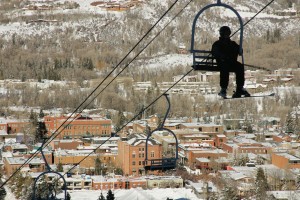ASPEN — The revised South Aspen Street lodge and townhome proposal is long on free-market components and short on hotel rooms, some Aspen City Council members said during Monday’s regular meeting.
In addition, some Juan Street neighbors expressed disdain for the latest plans, saying that a planned wall would be an out-of-character and divisive presence on the southwestern edge of downtown. They also said they hadn’t been included in the project team’s latest outreach efforts to discuss details, but a representative of the developer said that was because planners have been working long hours trying to develop a proposal that would stand up to council and community scrutiny.
Monday’s discussion was a conceptual review of the project. No decision was reached, but council members provided some input to developer ASV Aspen Street Owners LLC, represented by David Parker, of Bald Mountain Development. The talks will continue at the council’s next scheduled regular meeting, Nov. 12.
The project site would contain three separate buildings in the vicinity of Juan and South Aspen streets between Dean and Gilbert streets. One building would serve as an 84,000-square-foot, 76-room lodge. Two other buildings would contain 35 free-market condominiums, each with a lock-off unit for short-term rentals. The location has been the subject of community debate and development plans for many years and formerly was known as the Lodge at Aspen Mountain property.
Earlier this year, ASV Aspen Street Owners LLC submitted plans for a project centered around 14 free-market townhouses and 10 affordable-housing units on the site, along with eight off-site affordable-housing units in the Aspen Business Center area. In fact, the company already received city approval in 2003 for a plan involving 17 affordable-housing units and 14 townhouses on the property.
With one city goal being the development of lodging rooms to counter the shrinking hot-bed base, council members asked the developer to reconsider its plans with the addition of a lodge property on the site, which resulted in Monday’s conceptual review and also a recent Planning and Zoning Commission discussion.
Council members appeared to have many of the same issues with the proposal that the planning and zoning commissioners voiced.
“It’s moving further away from where I think it should be,” Councilman Torre said. “I have to agree with a lot of (Planning and Zoning Commission) comments that I’ve read, that being mostly that a majority of square footage is given over to 35 units of free market. I don’t really think that a lock-off program in your free market … is something I see as very viable.”
Torre said he hoped the developer and the city could keep moving forward with negotiations.
“Your (potential hotel operators) say they’d like more than 76 units, but in your site planning and your programming, you’re really not willing to give it any more of that space,” he said.
Parker replied that the only economically feasible way to add more units would be to create another floor on the lodge building. Already, elements of the four-story lodge building rise to just under 60 feet. During previous discussions, council members and planning and zoning commissioners have expressed the desire for a lower building.
Councilman Adam Frisch was a little more optimistic.
“I don’t see very many spaces left in this whole town to put a substantial lodging project besides here,” he said. “What the community needs is hot beds and people coming to town and experiencing it and coming back in a variety of ways.”
Frisch said his preference would be “to figure out a way to keep it no bigger but get more hotel rooms up there.”
As with many city development discussions, one of the meeting topics involved the calculated number of full-time employees and the affordable-housing requirements for them.
The developer’s plan accounts for 43 full-time employees. Four one-bedroom units in one of the buildings would house seven of them; six dormitory-style units in the lodge building would house 12. Eight three-bedroom units, to be developed in the Aspen Business Center area, would house 24 workers.
Mayor Mick Ireland said the 43-employee tally was too small.
He floated the concept of a special financing district to raise money to help offset the cost of affordable housing. That way, the cost of housing the property’s workers would be borne by the buyers of the free-market units.
By Ireland’s calculations, a special 10-mill levy (above the standard property tax rate) would raise $4.1 million over 20 years. A 30-mill levy would generate $6.1 million.
The type of buyer the upscale free-market residences would attract would be able to absorb the extra cost, Ireland said.
Ireland said that while it is preferable to build the affordable-housing units somewhere in the city, they don’t necessarily need to be located on the site.
“Not everyone wants to live near work,” he said.
Councilman Derek Johnson recused himself from the discussion because he lives within 300 feet of the proposed site. Councilman Steve Skadron used most of his speaking time on technical questions in lieu of providing opinions about the concepts.



Leave a Reply